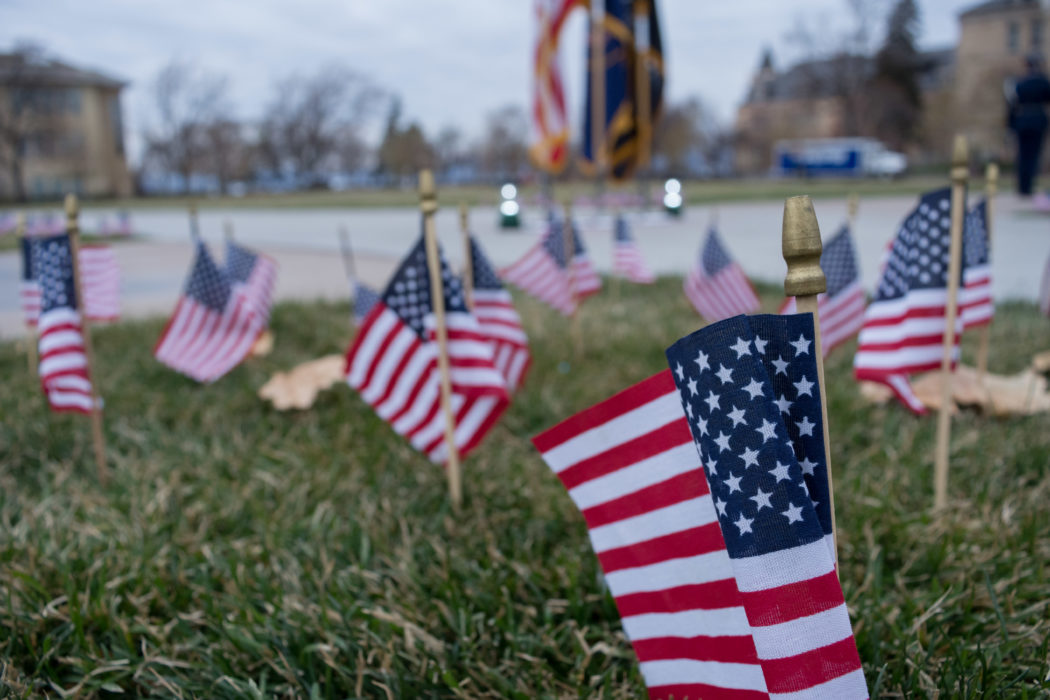A vigil for the lives lost in battle
Ten steps, stop. About-face, ten steps, stop. Turn, three steps, turn, three steps, turn, stop. Ten steps, stop.
Utah State University Air Force ROTC cadets repeated this march for 24 hours the Quad to honor soldiers who are missing in action (MIA) or prisoners of war (POW). The vigil began Thursday at 5 p.m. and ended Friday at 5 p.m.
Two cadets volunteered to march each hour, switching out with two other cadets every hour to maintain a constant guard of the American, POW/MIA and Utah flags in the middle of the Quad.
Cadet Andrew Merkley, an organizer of the vigil, said he hopes the vigil brings perception to people’s lives as they remember those who have gone missing during war.
According to the Defense POW/MIA Accounting Agency, more than 82,000 American military personnel are missing from conflicts from World War II to today.
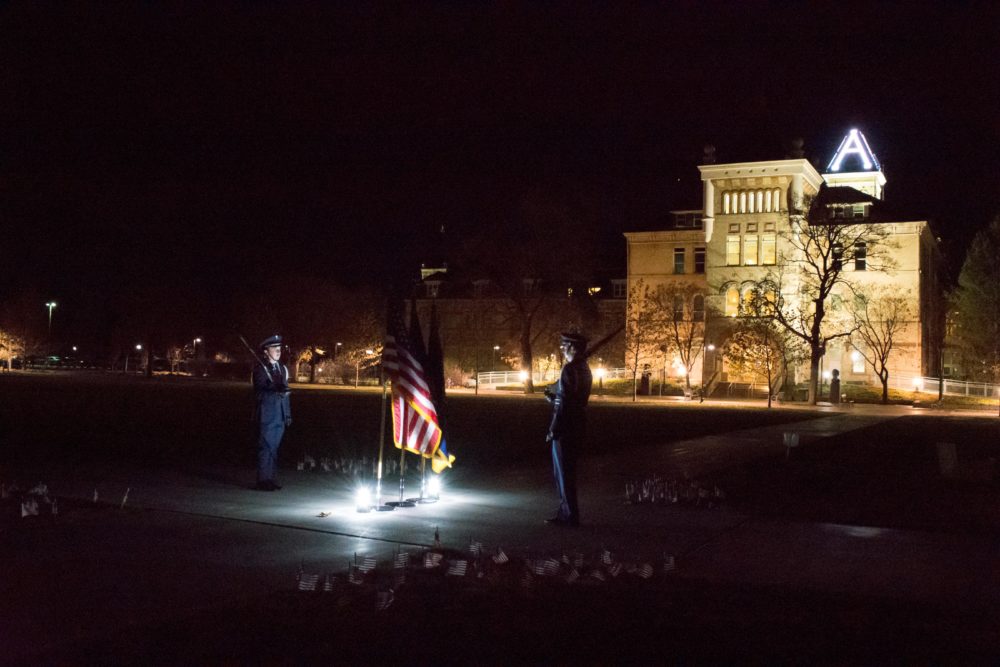 Iain Laurence
Iain Laurence Two Air Force servicemen keeping vigil in the cold, windy night for POW MIA
“We often forget the things that other people do for us,” Merkley said. “We forget the large and important things that people have done for us in our lives. I feel like us marching for 24 hours is a small sign of respect and hopefully can remind other people the sacrifices that people have made to ensure that we keep our freedoms and maintain the quality of life that we have.”
The ROTC cadets march each year regardless of the weather, braving snow in years past and temperatures in the low thirties this year. The vigil has occurred annually for around ten years now and is unique to the USU Air Force ROTC.
“It’s to symbolize that if we can be out there in any type of terrain and we’re not near as uncomfortable as any POW/MIA,” said Cadet Isabella Muffoletto. “It’s to help remind you that you get to go home and they never did.”
The vigil gave USU students and faculty the opportunity to pay their respects to POW/MIA soldiers. The ROTC also put boxes of small American flags that students could take and put in the ground around the vigil.
People who put a flag in the ground often took a moment of silence to pay their respects.
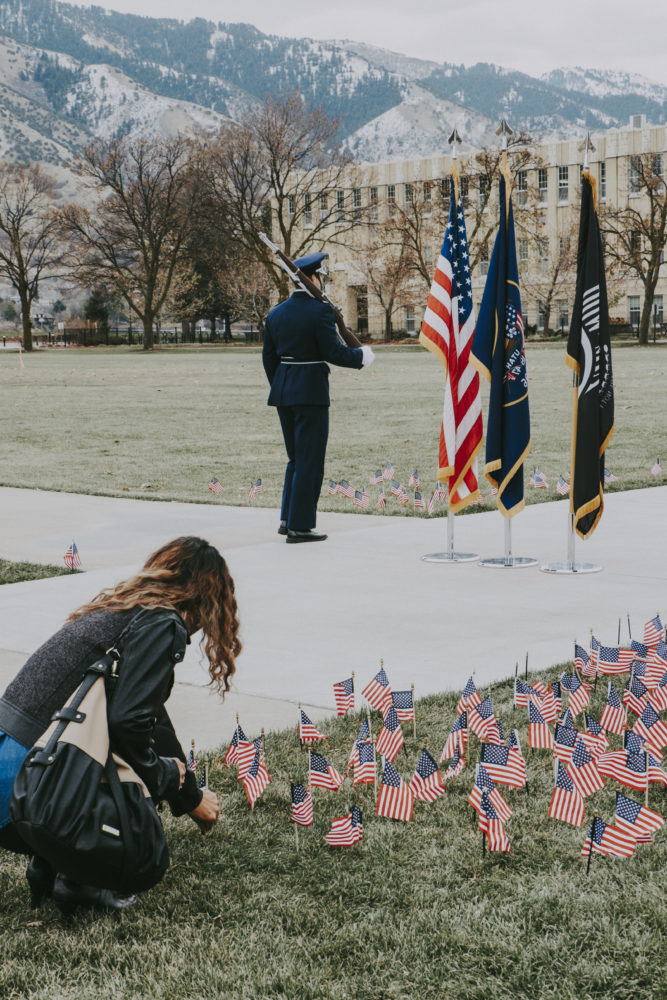 Lauren Romero
Lauren Romero Air Force 24 hour march for POW and MIA soldiers Friday November 10th 2017 (Lauren Romero)
“It gives students the chance to reflect on those that gave everything so that they can have what they have,” said Cadet Kimball Henderson.
“It is a good way to show our solidarity for prisoners of war and those missing in action, and people who have had that happen to them and those who continue to have it happen to them,” Cadet Weston Borup said.
The vigil also serves as a chance for ROTC cadets to reflect and honor POW/MIA soldiers.
“It goes by quick,” Cadet Jacob Bishop said. “If you think about everything prisoners of war had to go through, marching for an hour is nothing compared to what they had to go through for years.”
Cadet Henderson said he appreciates the time because it gives him an opportunity to sympathize with families that have POW/MIA soldiers. He said a member of his family was killed in action, which gives his family closure.
“It would be ten times worse if they were MIA or a POW, because you don’t know if they’re alive or if you’ll ever see them again,” Henderson said.
Overall, between marching and logistics, over 72 cadets volunteer throughout the vigil. Volunteers also read names of the POW/MIA soldiers by the Taggart Student Center throughout the day.
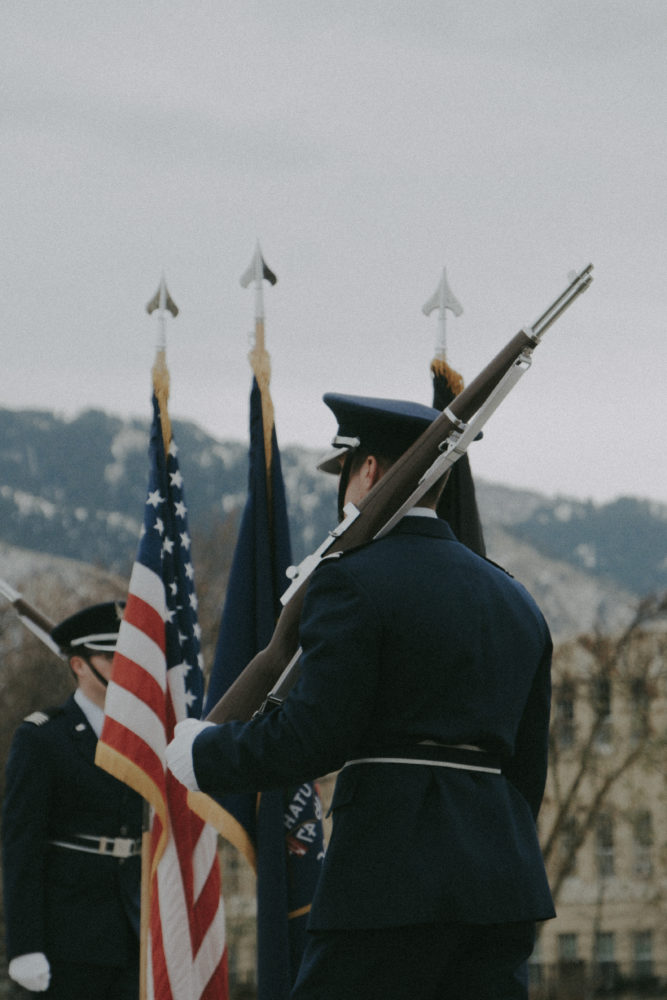 Lauren Romero
Lauren Romero Air Force 24 hour march for POW and MIA soldiers Friday November 10th 2017 (Lauren Romero)
“We never have to scramble for volunteers,” Muffoletto said. “It is kind of an amazing thing that people are so eager to go out and volunteer and do this even when it’s cold and uncomfortable, because this is important to us.”
Even with the reverence that most people gave, some Cadets who marched said they noticed some disrespect. Some students rode through the vigil on bikes and skateboards, and some mocked the event.
“I think we’re in the millennial culture where people are glued to their phones, so we have some near-collisions,” Muffoletto said. “We very understanding, but it creates an inconvenience because we’re not supposed to move for you and we’re not supposed to say anything.”
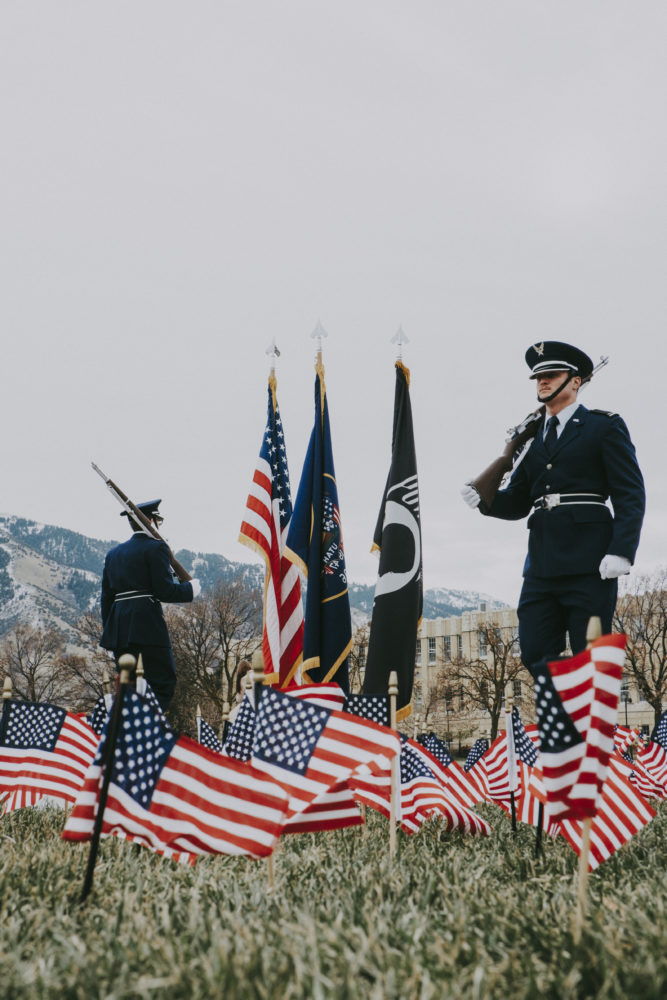
Cadet Samuel Bishop, who marched for the vigil at noon, said that a lot of people were reverent and paid their respects. He was surprised that some others would skateboard right through it or would mockingly march by their side.
“It’s okay to make fun of us, but what it represents make it kind of rude,” Bishop said.
Though the vigil was held to honor POW/MIA soldiers and help students remember those sacrifices, ROTC cadets ask that people continue to thank veterans for their service.
“I feel like people can show respect by showing them respect but also respecting other’s freedoms,” Merkley said. “Try to respect each other in this country and work together instead of fighting. Try to make it a more unified country overall.”
—dillan.passmore@aggiemail.usu.edu
@dirtyghettopass

